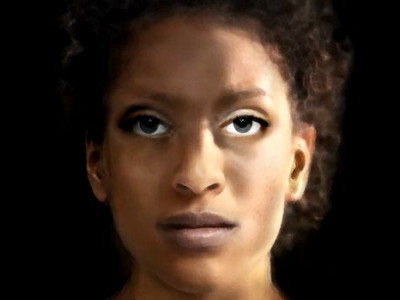Reproduce the voice of the mummy 3000 years ago

The voice of a mummy named 'Neshamun' who was a priest in Egypt more than 3000 years ago was reproduced using the latest science and technology. This 'voice of the mummy' is published on the Internet as voice data, and surprised voices are gathered in strange voices.
Synthesis of a Vocal Sound from the 3,000 year old Mummy, Nesyamun'True of Voice' | Scientific Reports

The dead speak! Scientists re-create voice of 3000-year-old mummy | Science | AAAS
https://www.sciencemag.org/news/2020/01/dead-speak-scientists-re-create-voice-3000-year-old-mummy
In a study that reproduces the voice of the 3000-year-old mummy, mummy a computer tomography put into the (CT) scanner, the mummy by tomography vocal tract to scan, we have created the 3D model. Since the voice of animals differs depending on the shape of this vocal tract, the research team tried to reproduce the 'voice of the mummy' by accurately reproducing the vocal tract.
Mummy's Neshamun whose vocal tract is scanned with a CT scanner

By outputting the created 3D model of the vocal tract with a 3D printer and connecting this to an artificial laryngeal sound source that is a sound source instead of the vocal cords, Neshamun's voice is reproduced. The 'voice of the mummy' created is very short and strange, but the research team writes that it 'provides a sense of what this ancient Egyptian was like.'
What sound does an ancient Eygptian mummy make? Scientist recreate voice of 3000 year old mummy --YouTube
The mummy named Neshamun, which was uttered for the first time in 3000 years, is exhibited at the Leeds City Museum in northern England. After being excavated in 1824, X-ray investigations were conducted in 1931, endoscopy in 1964, and radiological examinations in 1990. Multiple tests reveal that Neshamun died in his mid-50s and suffered from periodontal disease and severe tooth wear. However, Neshamun points out that 'there was clearly a Nubian blood flow because of the' developed mandible 'with a strong' prognathism 'as well as the upper jaw.'
Neshamun's vocal tract created by CT scan. 'The lack of tongue muscle mass and soft palate is evident,' the research team said. He also compared the reproduced vocal tracts of Neshamun with those of two adult males, 'the vocal tracts of Neshamun appear to be significantly smaller than those of modern adult males,' the research team points out.

Related Posts:







